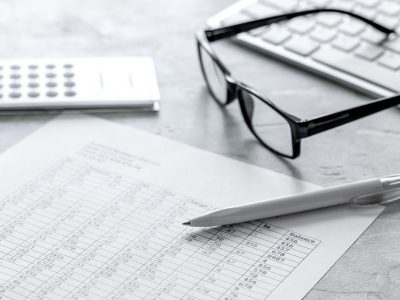
Only the final three columns debit, credit, and balance include monetary amounts. For this reason the format shown is referred to as https://www.bookstime.com/articles/bookkeeping-seattle a 3 column general ledger. For this reason the ledger is sometimes known as the book of final entry or the book of secondary entry.
What is a general ledger?
By consolidating all financial data, the general ledger provides a clear overview of the company’s financial health. This system acts as a master document detailing the business’s transactions over some time. These transactions are organized by accounts together with their dates, descriptions, and account balances—enough information to give you a bird’s-eye view of your business’s financial health. You may include individual assets and accounts like accounts payable and receivable, liabilities, inventory, and investments.
Bookkeeping
A journal entry is a sequential list of accounting entries recording transactions while a GL is a formalized account system where recorded transactions in a journal are posted. The general ledger is a foundational accounting document that contains a record of all your business’ activities. For each entry in your chart of accounts, it displays a sub-ledger documenting the details of every transaction affecting it, culminating in the account’s running balance.
Using general ledger codes
The debit and credit format makes the ledger look similar to a trial balance. Other ledger formats list individual transaction details along with account balances. By this same analogy, a ledger could be considered a folder that contains all of the notebooks or accounts in the chart of accounts.
- General ledgers are used to help business owners decide which moves to make next in their businesses.
- You need a general ledger to show you the big picture of your business’s finances and growth.
- This stores everything between depreciation, disposals, and asset management.
- Say you own a publishing house, Martin & Co., and purchased 20kg of paper on cash at $20 per kg on December 1, 2020.
- A General Ledger (GL) code is a code used to categorize financial transactions for reporting purposes.
- A general ledger helps you to know the overall profitability and financial health of your business.
As you can more easily find transactions you are searching for in your general ledger if you have a code for every transaction. Such an investigation helps you to avoid errors later, and, with an online accounting software like QuickBooks, such a comparison becomes a lot easier. The assets are categorized into current assets and fixed assets, and are typically reported on the left hand side of your company’s balance sheet. As a result, you’ll get an understanding of your company’s position with regards to debtors, creditors, expenses, revenue, income, etc. For example, any outstanding payments against suppliers or any payments to be collected from customers.
Accounting General Ledger Template
Asset ledgers are detailed sections regarding the company’s financial records specifically relating to the asset portion of the balance sheet, without tracking any of the expenses. This can save time when creating a general ledger, as all of the assets have already been accounted for. As your company grows, you can use the GL to track where your money is going and where it is coming from, using this data to make future business decisions.

Record All Financial Transactions

Sign up to a free course to learn the fundamental concepts of accounting and financial management so that you feel more confident in running your business. A general ledger helps you gl account examples to know the overall profitability and financial health of your business. In addition to this, the information contained in general ledgers help you to run any audits smoothly.

- You also match general ledger account balances to source documents to see if the accounts are accurate.
- Also, a detailed general ledger may be requested by an auditor should the accounts ever be audited.
- If you’re more of an accounting software person, the general ledger isn’t something you use but an automated report you can pull.
- This requires business transactions to be recorded in just one column, whether they are positive or negative entries.
- This template is ideal for accounting team members who need a comprehensive record of all financial transactions.
- Now let’s move on to talk about debits vs. credits and how they work in an accounting system.
The double-entry bookkeeping method ensures that the general ledger of a business is always in balance — the way you might maintain your personal checkbook. Every entry of a financial transaction within account ledgers debits one account and credits another in the equal amount. So, if $1,000 was credited from the Assets account ledger, it would need to be debited to a different account ledger to represent the transaction. Adjusting entries are prepared at the end of an accounting period to consider income or expenses that have not yet been recorded in the general ledger.
- In general, a nominal ledger account acts as a more specialized type of record-keeping within the larger system of the business’s general ledger accounts.
- The name of the account ‘Electricity Expense’ and its account code 640 are also shown in the heading.
- The general ledger includes assets, liabilities, equity, revenue, & expenses, providing a holistic view of a company’s transactions.
- The general ledger accounts report does not show accounts with 0.00 balances unlike a chart of accounts which shows every single account.
- Double-check record accuracy routinely to prevent accounting errors so you can use the information within to more-precisely track your company’s growth.
- Your ledger will reflect the numbers that are important to your small business.
- A Monthly Expenses Summary tab enables you to add general ledger codes for each monthly expense.
Leave a Reply